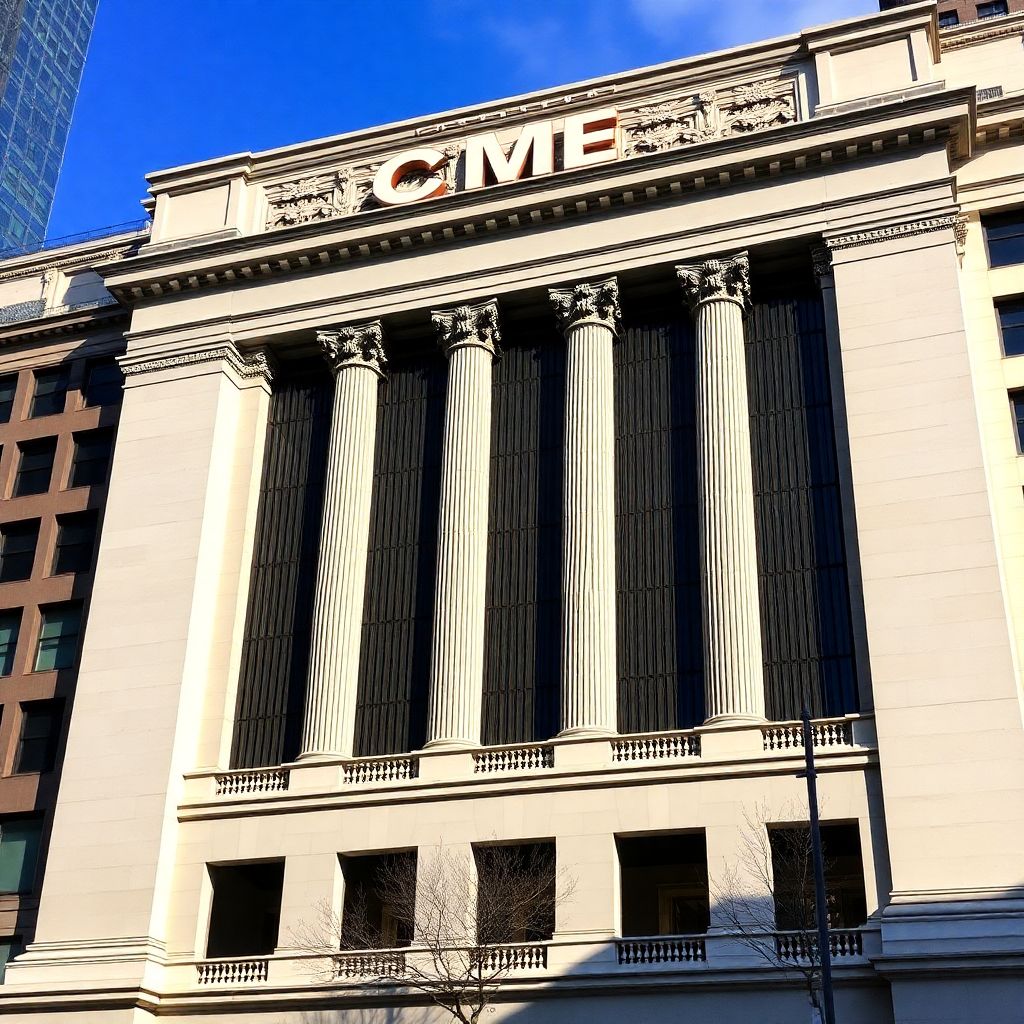CME Futures surpasses Binance in Open Interest – Why this shift signals a deeper market transformation
The Chicago Mercantile Exchange (CME) has recently outpaced Binance in terms of Open Interest (OI) for cryptocurrency futures, marking a pivotal moment in the evolution of the digital asset market. This shift signals growing institutional participation and reveals the market’s changing dynamics, especially in the wake of recent volatility.
As of the latest data, CME’s combined Open Interest in Bitcoin (BTC), Ethereum (ETH), Solana (SOL), and Ripple (XRP) futures has surged to $28.3 billion, clearly outpacing Binance’s $23 billion and Bybit’s $12.2 billion. For Bitcoin alone, CME’s OI reached $16.67 billion — approximately 34% higher than Binance’s. This notable lead comes despite CME not offering the same 24/7 trading environment as its crypto-native competitors.
This dominance in OI, however, is not mirrored in trading volume. Binance continues to lead the market in terms of daily futures volume. For example, just in BTC/USD futures, Binance posted $56 million in trading volume, while the combined activity of Binance, OKX, and Bybit regularly exceeds $100 billion across major assets like BTC, ETH, SOL, and XRP. In contrast, CME averages around $14 billion per day.
So why does CME’s rise in Open Interest matter?
The answer lies in the nature of capital backing these positions. CME is a regulated U.S.-based derivatives exchange known for attracting institutional money. The surge in OI indicates that a larger share of professional and institutional traders are now expressing their market positions through CME rather than through offshore platforms. This transition points to a growing desire for regulatory clarity, counterparty risk mitigation, and long-term positioning rather than short-term speculation.
The October 10 crypto flash crash further underscored this trend. The event triggered over $19 billion in liquidations — the highest on record. Yet CME weathered the storm more effectively than Binance. CME’s OI in Bitcoin dipped from $18.3 billion to $16.2 billion — a modest 11% decline. Binance, on the other hand, saw a sharper drop of 22% during the same period. One key reason: CME’s futures contracts are halted over weekends, closing at 4:00 p.m. CT on Fridays and reopening Sundays. This schedule shielded CME positions from weekend volatility, limiting exposure during the crash.
This timing quirk gave CME a significant edge. While other platforms were hit hard by the sudden drop in prices, CME remained relatively insulated. This resilience has not gone unnoticed by larger investors and fund managers looking for more stable trading environments.
Still, market dominance is far from settled. Binance and its peers maintain a commanding lead in terms of liquidity and accessibility. The ability to trade around the clock remains a major draw for retail and speculative traders. However, CME’s planned introduction of 24/7 trading for futures and options in 2026 could erode this advantage. If institutional demand continues to grow, and if CME adapts to meet that demand with continuous trading, the balance of power could shift significantly.
Beyond just numbers, this transition reflects a maturing market. As more institutional participants enter the space, they are pushing for infrastructure that mirrors traditional finance: regulated environments, risk management protocols, and transparency. CME’s ascendancy in OI is a leading indicator of this evolution.
The implications are profound. A shift in Open Interest from offshore exchanges to regulated venues like CME could also affect price discovery, volatility, and market manipulation risks. As institutional capital becomes more influential, it may drive a new wave of product innovation, including more complex derivatives, structured products, and hedging tools.
It’s also worth noting that CME’s futures are cash-settled, unlike the perpetual swaps common on crypto-native platforms. This structure appeals to traditional investors who prefer not to take custody of the underlying assets. As adoption widens, especially among hedge funds, asset managers, and even pension funds exploring crypto exposure, platforms like CME become increasingly attractive.
In addition, regulatory scrutiny over offshore exchanges continues to intensify. This creates uncertainty for platforms like Binance, which remain outside the purview of many financial regulators. For institutions wary of regulatory backlash, CME offers a safer harbor.
Looking ahead, the battle for dominance in crypto derivatives is far from over. Innovations from both sides — traditional and crypto-native — will define the next chapter. However, CME’s recent rise in Open Interest is more than a headline; it’s a signal that the crypto market is entering a new phase, where institutional capital and regulatory compliance may start to set the tone.
In conclusion, while Binance continues to dominate in terms of raw trading volume, the growing Open Interest on CME points to a deeper shift in the market’s foundation. With 24/7 trading on the horizon and increasing institutional interest, CME is positioning itself not just as a competitor, but potentially as a future leader in the crypto derivatives space. This development is crucial for anyone watching the evolution of digital asset markets — from traders and analysts to institutional investors and policymakers.

